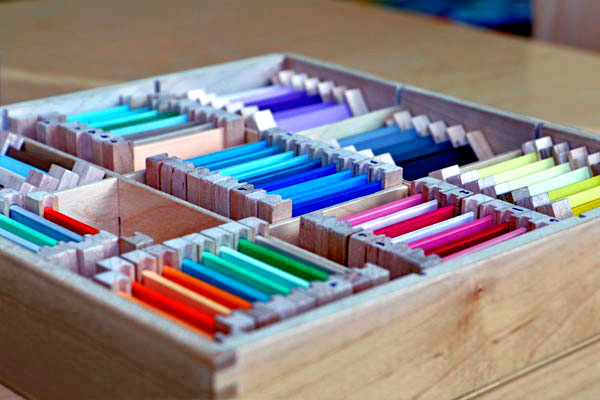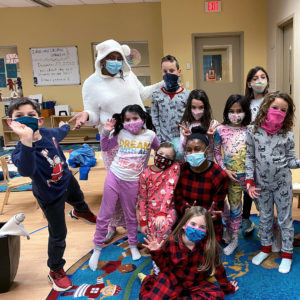About Our Program
Environment
Primary Program: Fostering intellectual development through independent exploration.
Kindergarten Program: Mastering the concepts outlined in the Virginia Standards of Learning.
Development
Primary Program: Working with activities to live independently and instill confidence.
Kindergarten Program: Better understanding the world around them.
Motive
Primary Program: Enhancing awareness of the world through geography, science, art, and music.
Kindergarten Program: Reading, Writing, Math, Science, History, Geography, Spanish, Art, and Yoga.
Language
The mechanisms needed for speaking clearly, writing, and reading are taught through the materials in the Language area in the Montessori classroom. In a Montessori classroom much work is done at the oral level to stimulate language development and encourage oral communication. Writing as an expression of thought is one aspect of writing. The movable alphabet serves to perfect the mechanism of speech. Reading helps to develop ideas. Spooning, pouring and sponge activities help the child gain firm muscle control of the pencil. The knobbed cylinders help to practice the use of three fingers to hold a pencil.
Speaking
- Conversations
- Poems
- Spy Games
- Rhymes
- Greetings
- Storytelling
Pencil Movement
- Pencil Grasp
- Muscle Control
Writing
- Movable Alphabet
- Hand Movement
- Idea Development

Sensorial
The child is exposed to materials that help distinguish length, dimension, weight, sequence, plane and solid forms, quantity, gradation, sets, algebraic and geometric progressions, etc. They work with materials that illustrate these ideas.
Matching Activities
- Color tablets
- Matching fabrics
- Baric tablets
- Touch tablets
- Smelling jars
- Sound cylinders
Geometry
- Knobbed cylinders
- Knob less cylinders
- Red Rods
- Pink Tower and Broad Stair
- Geometric cabinet, geometric solids and bases & matching activity
Benefits
- Strengthening the concept of gradation.
- Understanding equality and counting objects correctly

Practical Life
Cooking activities help the children understand the concepts of addition and multiplication. Sorting activities help the child recognize similarities and differences in mathematical concepts, and pairing two groups of things, which lays the foundation for one to one correspondence of quantity with number symbol. Moving activities use prepositions such as on, under, over, etc. They help explain the concepts of spatial and temporal relations, and help understand place value, linear counting, the four mathematical operations, and gradation.
Cooking
- Food Preparation
- Mixing
Sorting
- Dressing Frames
- More Than/Less Than
- Nuts & Bolts
- Locks & Keys
Moving
- Line Activities
- Movement
Practical Life Area
- Concentration: helps focus better on the math material.
- Muscle Coordination: helps manipulate the math material.
- Independence: gives self-confidence to work without an adult.
- Order: helps learn the order of steps necessary to complete a task.
Sensorial Area
- Beads
- Chains
- Boards
Mathematics
Materials move from concrete to abstract. Each level of math is taught by introducing the quantity alone, then symbol alone, then association of symbols and quantity.
A child learns Math by working with materials that exhibits the basic idea, rather than by listening or watching a teacher. The child goes through this material at their own pace. There is a built in control of error in each material that allows the child to discover and correct their own mistakes.
A Day in the Life







